May 14, 2025 | 07:27 GMT +7
May 14, 2025 | 07:27 GMT +7
Hotline: 0913.378.918
May 14, 2025 | 07:27 GMT +7
Hotline: 0913.378.918
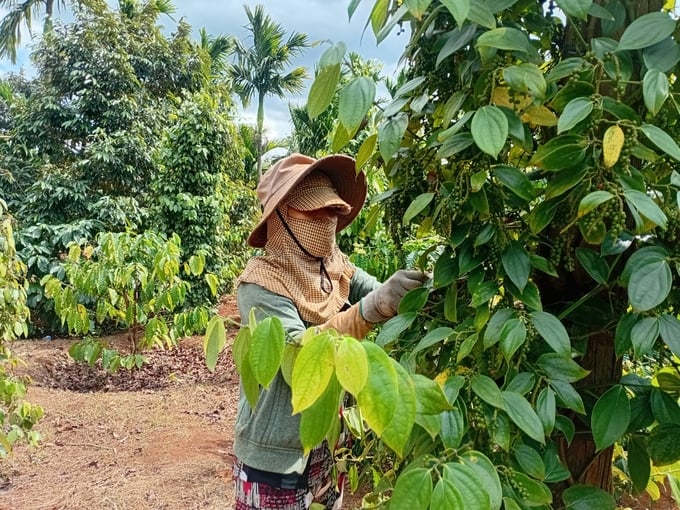
Gia Lai pepper officially enters harvest season. Photo: Tuan Anh.
Recently, the harvest season has officially begun in pepper farms throughout Gia Lai province. Farmers take the recovery of pepper prices as a favorable development following years of price declines. Pepper prices are currently at their greatest level in many years, surpassing 150,000 VND per kilogram. Rather than expanding cultivation areas, the local government has recommended that producers concentrate on stable development.
Nguyen Tan Luc, a veteran farmer from Thon 4, Ia Hlop commune, Chu Se district, is harvesting his pepper produce with joy, despite the scorching sun. After years of facing diseases and fluctuating prices, he announces that "black gold" has finally recovered with a joy. His 1,200 pepper posts are prepared for harvesting this year. Nevertheless, he and his wife have been working tirelessly to select the ripe peppercorns as a result of a labor scarcity that emerged following the Lunar New Year.
Mr. Luc reflects on the previous years and the significant losses that many households experienced as a result of the unstable prices of peppers, which compelled some producers to abandon their crops. Nevertheless, he remained dedicated to the cultivation of pepper, particularly by implementing organic agricultural techniques, which have since yielded results. He anticipates that pepper prices will stabilize, thereby enabling farmers to concentrate on sustainable production, in conjunction with other commodities.
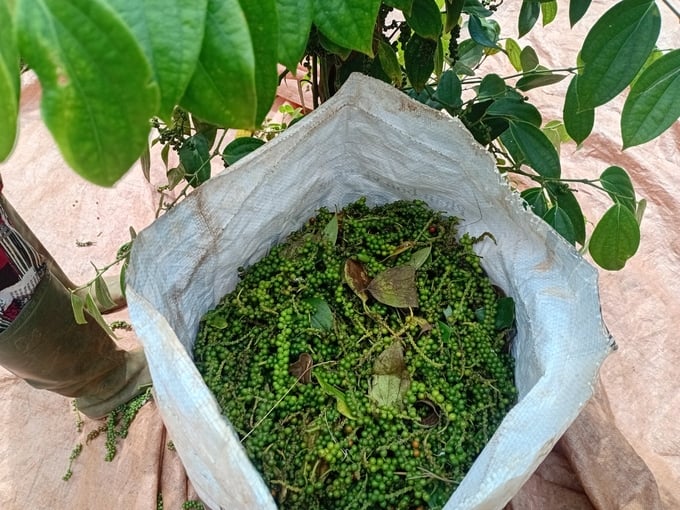
Pepper yield is stable this year. Photo: Tuan Anh.
Either delighted with the harvest, Mrs. Vo Thi Tuyet Ia Piar commune, Chu Prong district, shares that her family’s nearly 500 pepper posts are ready for harvest this year. The yield is slightly lower than last year, with an estimated 2 kilograms of dried pepper per post, as she has recently transitioned to organic farming. Her family anticipates income of nearly 200 million VND, with current prices hovering at approximately 160,000 VND per kilogram.
Nguyen Thanh Hoi, a husband and wife team from Thon 1, Nam Yang commune, are meticulously harvesting their 200 pepper posts in Dak Doa district. Mr. Hoi is excited to report that their farm has achieved a respectable yield of nearly 3 kilograms of dried pepper per post as a result of appropriate care. They are exceedingly pleased with the outcomes, as prices have escalated to approximately 157,000 VND per kilogram.
"We are currently harvesting a pepper crop, but we have an additional 500 posts that are currently undergoing replanting. These posts should be ready for harvest next year." Mr. Hoi is optimist that pepper prices will remain consistent, enabling him to sustain his production and enhance his standard of living.
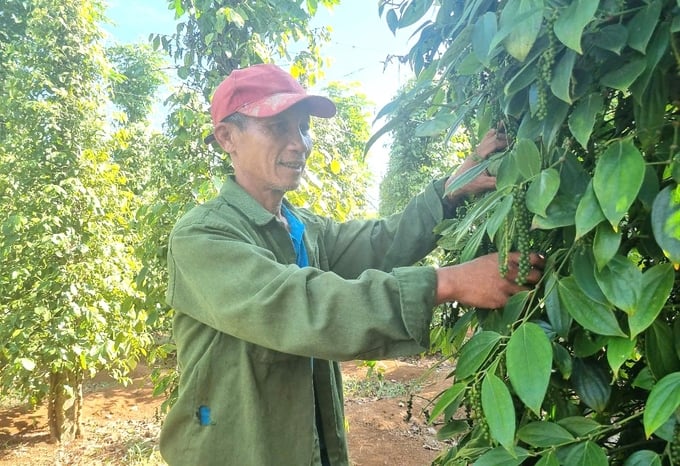
Mr. Hoi is very excited when pepper prices increase. Photo: Tuan Anh.
According to Nguyen Tan Cong, Director of Nam Yang Agricultural and Service Cooperative in Dak Doa district, the stable yield of 2.5 - 3 tons per hectare and the significant increase in pepper prices this year have considerably increased the profits of farmers.
In recent years, pepper has been a critical crop, and producers have placed significant expectations on it. Nevertheless, they are now implementing more intelligent cultivation practices by intercropping and diversifying crops to increase productivity on available farmland and reduce risks, as a result of the lessons learned from previous unsuccessful seasons," Cong shared.
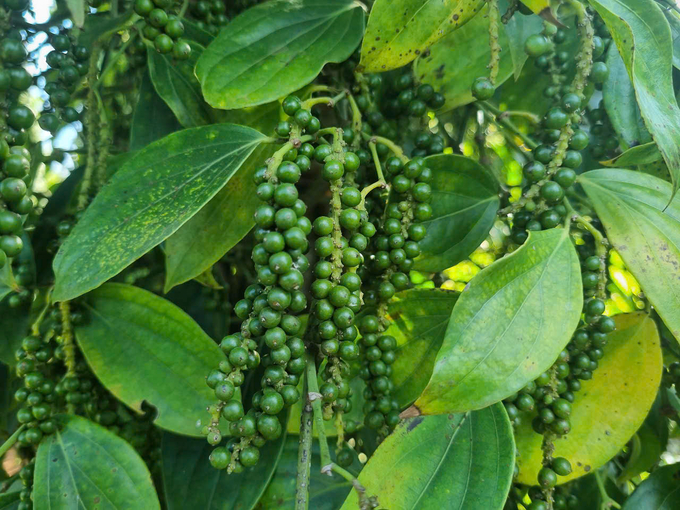
Gia Lai maintains a stable pepper cultivation area of approximately 10,000 hectares. Photo: Tuan Anh.
The Gia Lai Provincial Crop Production and Plant Protection Sub-Department has reported that the province presently has an average yield of approximately 3.5 tons per hectare on approximately 7,500 hectares of pepper. The Gia Lai Department of Agriculture and Rural Development has been actively advising localities to concentrate cultivation in the most suitable areas for pepper growth in recent years, with the goal of enhancing productivity, quality, and sustainability in the pepper industry. These areas include Chu Puh, Chu Se, Chu Prong, Ia Grai, Chu Pah, Dak Doa, Mang Yang, Duc Co, and Pleiku City. Concurrently, the cultivation of peppers in unsuitable regions has been diminishing in order to establish a strong foundation for crop restructuring.
The recent price increase has restored farmers' confidence in this once high-value crop, which is frequently referred to as the "black gold" of the Central Highlands, according to Hoang Thi Tho, Deputy Director of the Gia Lai Crop Production and Plant Protection Sub-Department.
In order to guarantee consistent pepper cultivation in the years ahead, Gia Lai intends to preserve an 8,500-10,000 hectare cultivation area. In order to establish processing facilities, the province intends to establish concentrated, high-quality, and secure pepper production zones.
Furthermore, in order to mitigate insect pressure and implement cutting-edge agricultural methodologies, Gia Lai intends to expand its intercropped pepper plantations. The province's objective is to have over 60% of its pepper-growing areas implement Good Agricultural Practices (GAP) by 2030.
"Gia Lai will enhance production linkages and implement contemporary agricultural methods, including the optimization of plantation design and the utilization of biological products for pest control, in order to establish a sustainable pepper industry." Tho also stated that the province will establish geographical indications and plantation codes and expand organic-certified pepper cultivation. He further stated that Gia Lai's objective is to ensure that over 70% of its pepper cultivation areas have plantation codes for export compliance and traceability by 2030.
*USD 1 = VND 25,310
Translated by Linh Linh
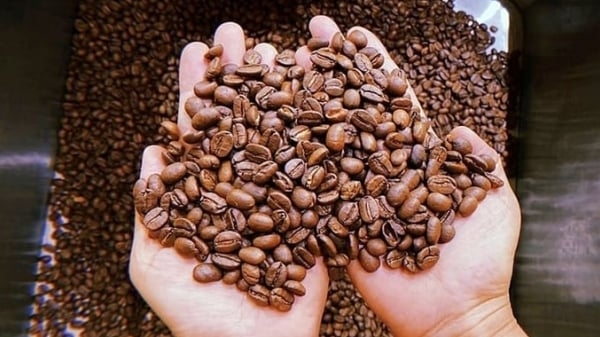
(VAN) Coffee prices on May 13, 2025 decreased by VND 1,200, trading around VND 125,500 – 126,000/kg. Global coffee prices also fell sharply.
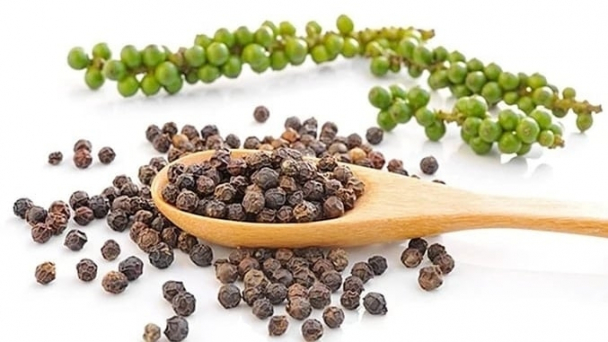
(VAN) Pepper prices on May 12, 2025 in the domestic market are hovering around VND 151,000 - 152,000/kg, while global pepper prices also remain flat.
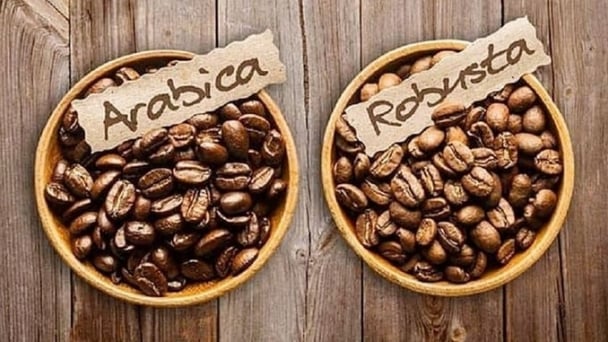
(VAN) Coffee prices on May 12, 2025, continue to trade around the range of VND 128,000 – 128,200/kg. Meanwhile, global coffee prices remain stable.

(VAN) Rubber prices on May 12, 2025, increase slightly globally. Latex purchasing prices in Vietnam remained steady, ranging from VND 397 to VND 462/TSC.
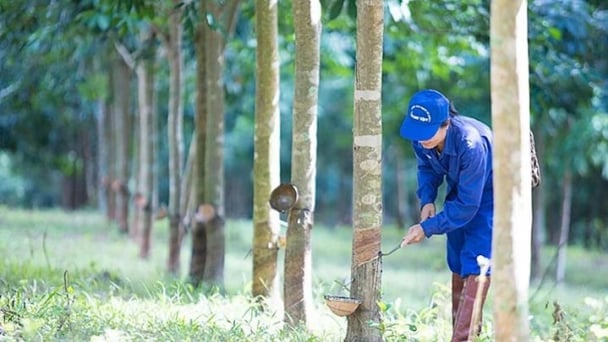
(VAN) Rubber prices on May 9, 2025, on the global market fluctuated wildly. Meanwhile, domestic latex prices remain steady, ranging from VND 397 to 462/TSC.
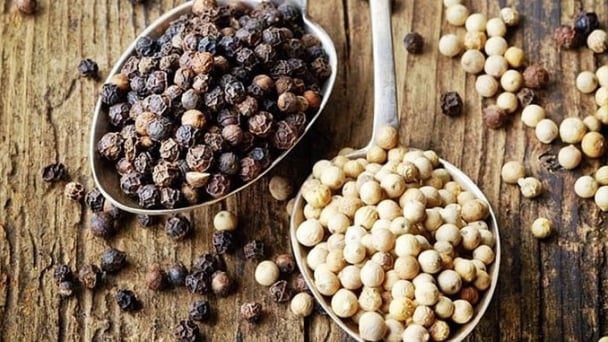
(VAN) Pepper prices on May 9, 2025, remained unchanged domestically, trading at VND 153,000 – 155,000/kg. Global pepper prices showed little fluctuation.
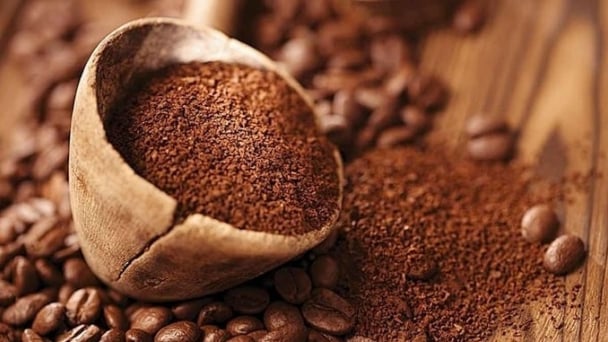
(VAN) Coffee prices on May 9, 2025, increased by VND 300 domestically, trading at VND 128,000 – 128,400/kg. Global coffee prices also saw a slight uptick.